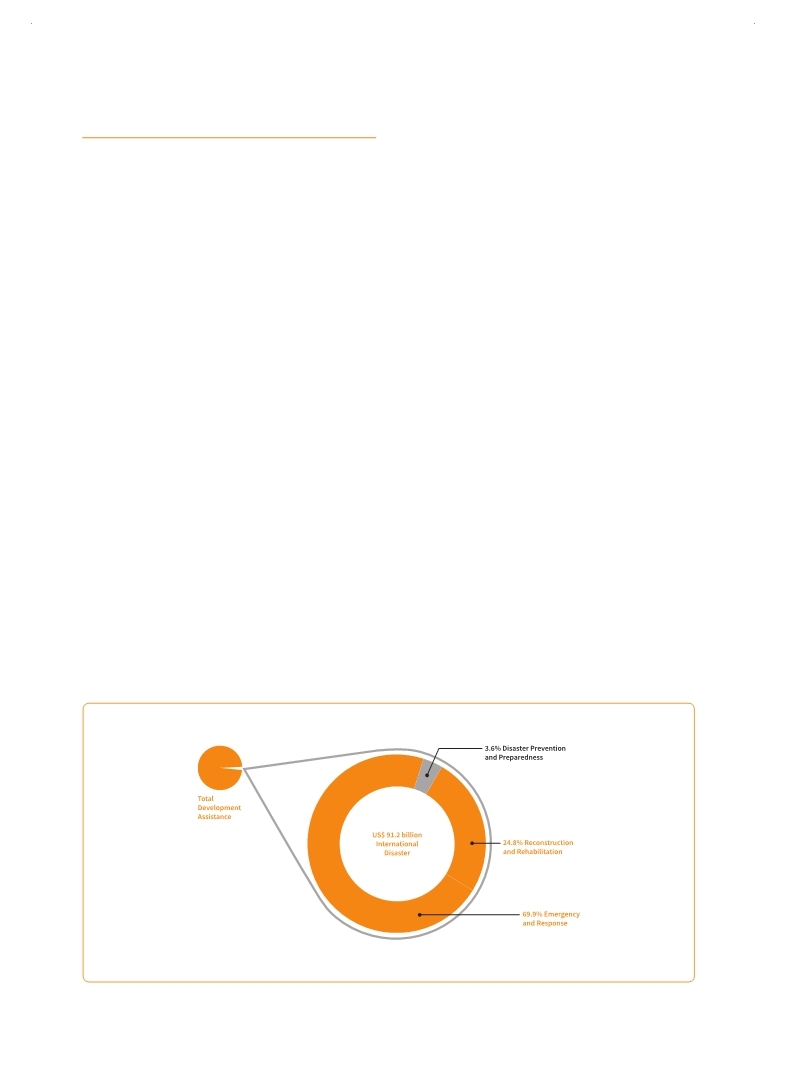 |
Global Assessment Report on Disaster Risk Reduction 2015
Making development sustainable: The future of disaster risk management |
 |
Global Assessment Report on Disaster Risk Reduction 2015
Making development sustainable: The future of disaster risk management |
|
|

122
Part II - Chapter 6
6.3 A transient political and
economic imperative
While risk management generally gains momentum in the aftermath of disasters, the importance of investing in risk reduction is usually not part of daily political agendas.
The political importance of the disaster risk management sector in most countries is transient. When large-scale disasters threaten development, the sector enjoys strong political support and budgetary allocations. Before and after large disasters, the sector is often relegated to the political and economic margins of government as other priorities and crises come into the foreground.
This transient political and economic support for the sector reflects its focus on protecting development from disasters as merely occasional events rather than on managing risks which are generated and accumulated on an ongoing basis. While extensive disasters occur regularly in most countries, they have only localized impacts and generally affect low-income households, small businesses and local infrastructure, so they
rarely translate into a national political and economic imperative for disaster risk management (UNISDR, 2011a
UNISDR. 2011a,Global Assessment Report on Disaster Risk Reduction: Revealing Risk, Redefining Development, Geneva, Switzerland: UNISDR.. . This transient imperative is reflected in inadequate financing of the disaster risk management sector and insufficient investment in weak human and institutional capacities. Nationally, some countries have established designated budget mechanisms to ensure that the disaster risk reduction sector has some level of guaranteed resources. Examples include percentage allocations by law in the Philippines, budgetary policy in Japan, or specially earmarked funds in Mexico (IFRC and UNDP, 2014
IFRC (International Federation of Red Cross and Red Crescent Societies) and UNDP (United Nations Development Programme). 2014,Effective law and regulation for disaster risk reduction: a multi-country report, New York.. . However, in many other countries the sector is dependent on resources from emergency and contingency funds, which are only replenished when large disasters occur. In the HFA Monitor, some countries report insufficient resources to maintain even basic response capacities. The dependence on emergency funding encourages a form of humanitarian materialism in which disasters themselves become commodities that can influence the consolidation of institutional resources and power.
(Source: GFDRR, 2012b
GFDRR (Global Facility for Disaster Reduction and Recovery). 2012b,Managing Disaster Risks for a Resilient Future: A Strategy for the Global Facility for Disaster Reduction and Recovery 2013 – 2015, The World Bank, Washington, D.C.. . Figure 6.2 Share of development aid allocated to disaster prevention and preparedness
|
 
Page 1Page 10Page 20Page 30Page 40Page 50Page 60Page 70Page 80Page 90Page 100Page 110Page 112Page 113Page 114Page 115Page 116Page 117Page 118Page 119Page 120Page 121Page 122Page 123->Page 124Page 125Page 126Page 127Page 128Page 129Page 130Page 131Page 132Page 133Page 134Page 135Page 136Page 140Page 150Page 160Page 170Page 180Page 190Page 200Page 210Page 220Page 230Page 240Page 250Page 260Page 270Page 280Page 290Page 300Page 310
|
|
 
|
 
|
